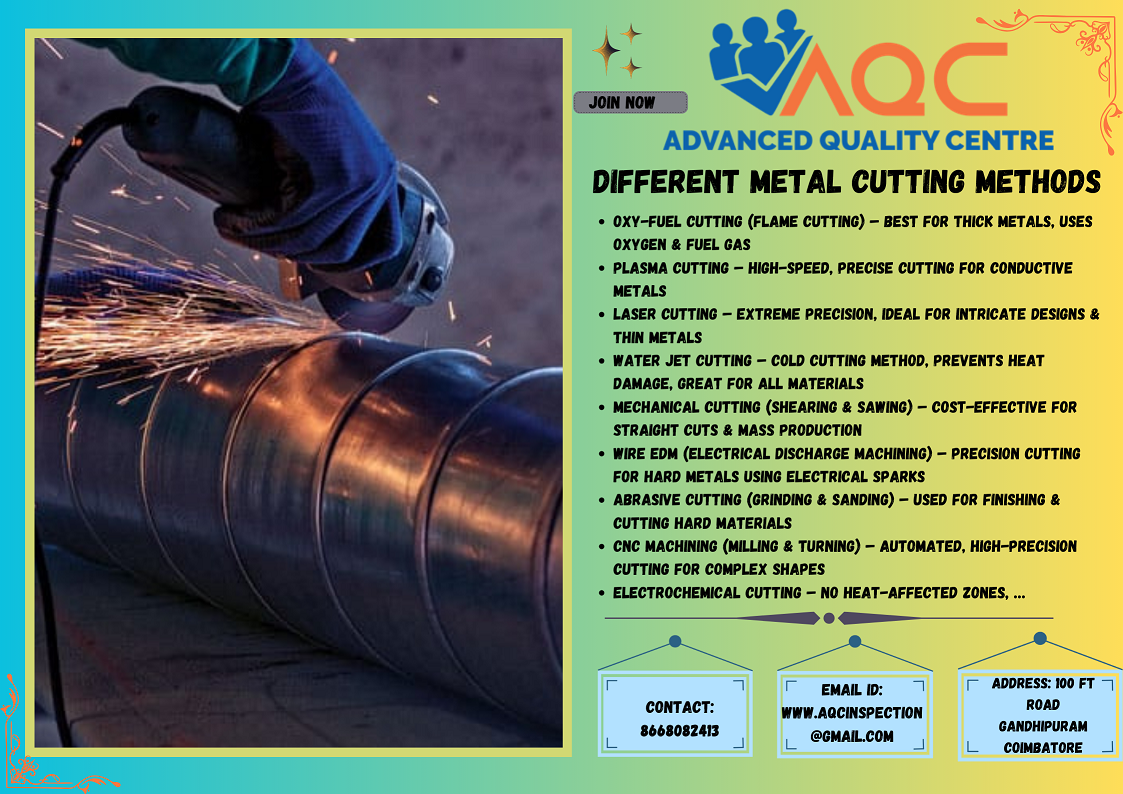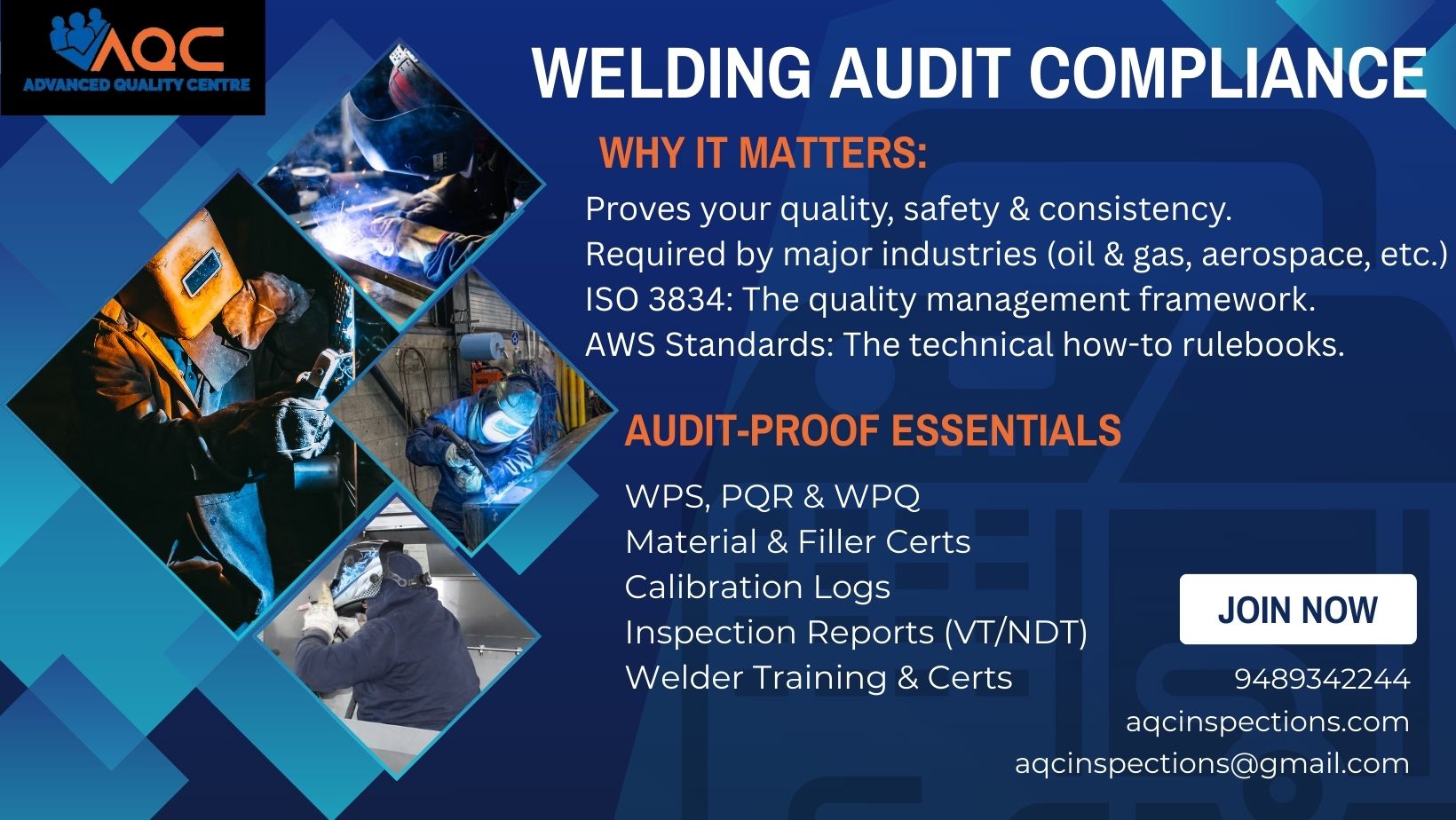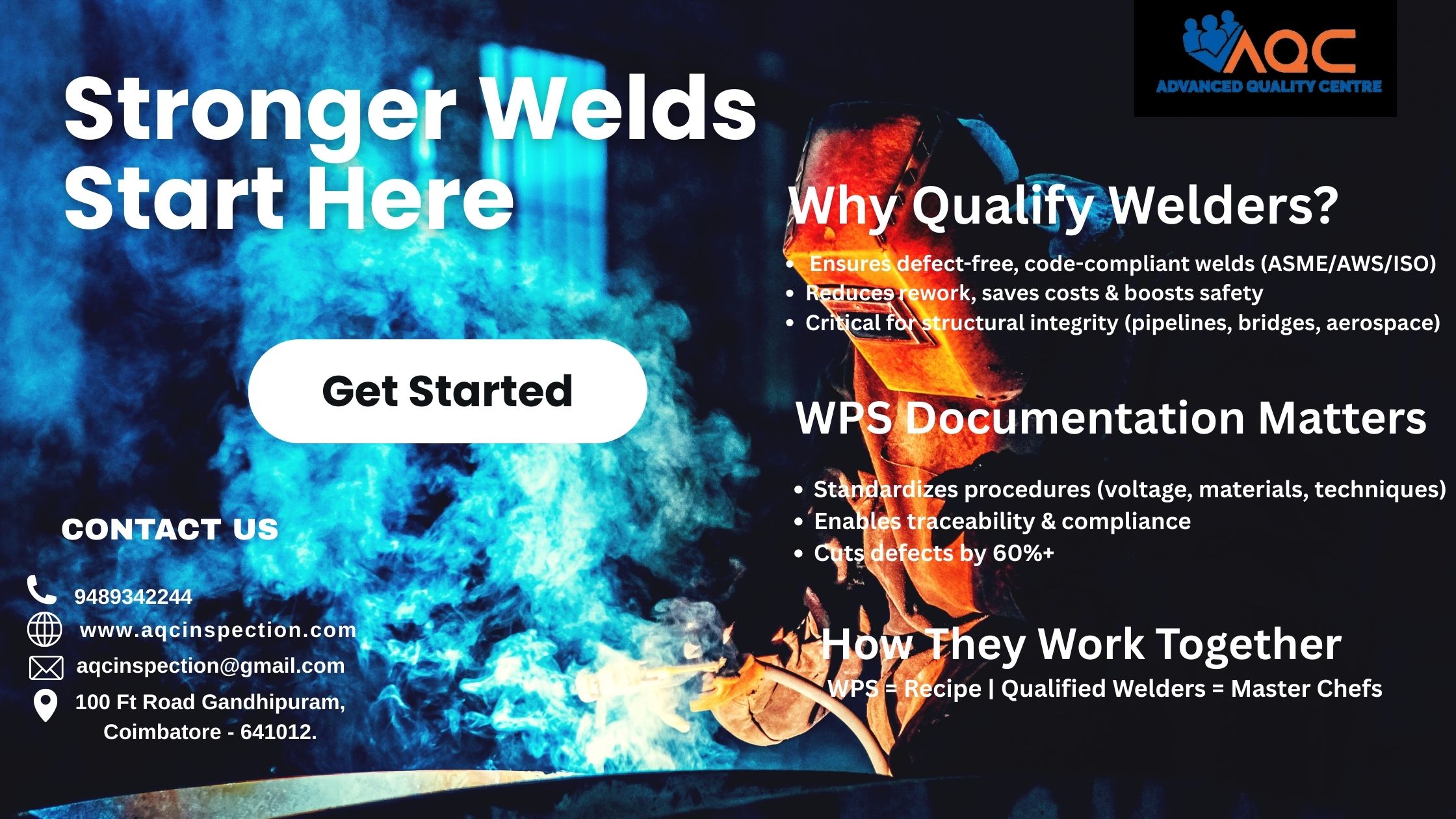Introduction
Metal cutting is an essential process in manufacturing, fabrication, and construction industries. Choosing the right metal cutting method is crucial for achieving precision, efficiency, and cost-effectiveness. At AQC – Advanced Quality Centre, we specialize in providing expert solutions for metal cutting, machining, and fabrication, helping industries enhance productivity and quality.
Types of Metal Cutting Methods
Metal cutting techniques can be categorized into traditional (mechanical) and modern (thermal and laser-based) methods. The selection depends on material type, cutting accuracy, speed, and cost considerations.
-
Mechanical Cutting Methods
Mechanical cutting involves physical force to remove material. These methods are reliable, cost-effective, and widely used in industries.
-
a) Sawing
- Types: Bandsaw, Hacksaw, Circular Saw
- Best For: Cutting pipes, bars, and sheets in construction and fabrication.
- Advantages: Simple, low-cost, and efficient for bulk cutting.
- Limitations: Slower than advanced methods, rough edges may require finishing.
-
b) Shearing
- Best For: Sheet metal cutting, automotive, and HVAC industries.
- Advantages: Fast and ideal for straight cuts in thin metal sheets.
- Limitations: Not suitable for thick materials; produces burrs.
-
c) Milling & Turning
- Best For: Precision metal removal in machining industries.
- Advantages: High accuracy, customizable cuts, and smooth finishes.
- Limitations: Time-consuming and requires skilled operators.
-
d) Water Jet Cutting
- Best For: Cutting soft and hard metals like aluminum, stainless steel, and titanium.
- Advantages: No heat-affected zones, high precision, eco-friendly.
- Limitations: Higher operational costs due to water and abrasive material usage.
-
Thermal Cutting Methods
Thermal cutting techniques use heat energy to melt or burn through metal.
- a) Oxy-Fuel Cutting (Oxy-Acetylene Cutting)
- Best For: Cutting thick carbon steel in shipbuilding and construction.
- Advantages: Low cost, portable, effective for heavy-duty cutting.
- Limitations: Not suitable for non-ferrous metals like aluminum or stainless steel.
- b) Plasma Cutting
- Best For: Stainless steel, aluminum, copper, and alloys in manufacturing and fabrication.
- Advantages: Faster than oxy-fuel cutting, works on a variety of metals.
- Limitations: Produces heat-affected zones, requires a power supply.
- c) Laser Cutting
- Best For: High-precision cutting in automotive, aerospace, and electronics industries.
- Advantages: Ultra-precise, minimal material waste, smooth finish.
- Limitations: Expensive setup, limited cutting thickness.
- d) Arc Cutting (Carbon Arc, Air Carbon Arc, and Plasma Arc)
- Best For: Heavy-duty metal removal in industrial applications.
- Advantages: Ideal for gouging, welding preparation, and repair work.
- Limitations: Generates intense heat, requiring operator expertise.
-
Advanced Metal Cutting Technologies
Modern metal cutting methods leverage automation and advanced technology for precision.
- a) CNC (Computer Numerical Control) Cutting
- Best For: Mass production and custom metal part fabrication.
- Advantages: High accuracy, repeatability, and efficiency.
- Limitations: Expensive setup, requires programming skills.
- b) EDM (Electrical Discharge Machining)
- Best For: Cutting hard metals and complex shapes.
- Advantages: Extremely precise, no mechanical stress on metal.
- Limitations: Slow cutting speed, high energy consumption.
- c) Ultrasonic Cutting
- Best For: Cutting thin and delicate metals.
- Advantages: Clean cuts with minimal heat damage.
- Limitations: Limited to specific applications, not ideal for thick metals.
Choosing the Right Metal Cutting Method
To select the best metal cutting technique, consider:
- Material Type & Thickness: Harder and thicker metals require advanced methods like plasma or laser cutting.
- Precision Requirements: For high accuracy, CNC, laser, or EDM cutting is preferred.
- Production Speed: High-speed cutting is essential for mass production industries.
- Cost Efficiency: Balancing operation cost and output quality is key.
- Heat Sensitivity: Water jet and EDM are ideal for heat-sensitive materials.
Conclusion
Selecting the right metal cutting method enhances productivity, accuracy, and cost-efficiency in various industries. At AQC – Advanced Quality Centre, we provide expert consultation and state-of-the-art metal cutting solutions tailored to your needs. Contact us today for professional guidance on precision cutting, fabrication, and industrial metalworking!
FOR MORE INFORMATION AND TRAINING:
- Contact ADVANCED QUALITY CENTRE (AQC)
- Mail ID : [email protected]
- Contact: 8668082413
- Visit as : https://aqcinspection.com/
- Address: 100 ft road, Gandhipuram, Coimbatore.
Visit our technical and career updates at our Blog site https://advancedqualitycentre.blogspot.com . or
https://ndtcenter.blogspot.com
Subscribe our youtube channel to know more practical explanations https://aqcinspection.com/




